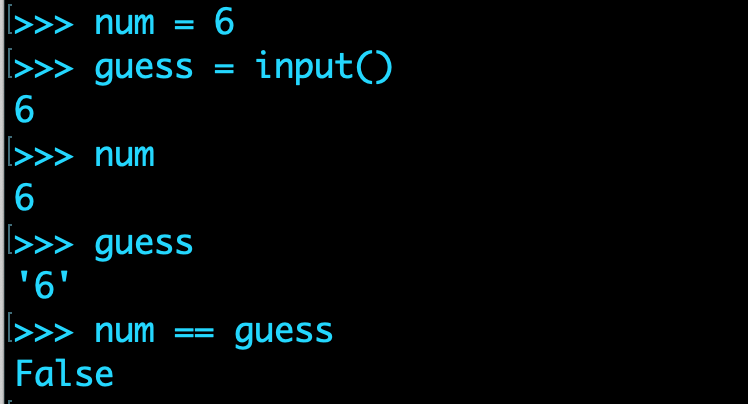Code Toolkit: Python, Spring 2023
Week 10 — Homework assignment
due: Tuesday, April 11, 8pm
-
Review this week's lecture notes.
-
Experiment with text-based interactivity on the command line using Python in VS Code by creating a number guessing game.
Pick a random number between 1 and 10. Add
import randomas the first line of your sketch and userandom.randint()to generate a random number. That takes two arguments: the low and high range. Probably 1 and 10 would work well? But up to you.Ask the user for their name using the
input()command. Specify a prompt so the user knows what they are entering.Now ask the user for a guess. Again use the
input()command and a prompt so the user knows what they are entering.Now check if the number you've picked and the number the user has entered are the same. Remember that the
input()command generates text, but the random value you've picked is a number. See this snippet of interactive Python code:The solution here is to convert the user's guess to a number as well using the
int()command.If the user has guessed correctly, print a congratulations message using their name. Otherwise, let them know they guessed wrong.
Lastly, this only works once. Put the user guess and the check for correctness inside a
whileloop so that the user can guess many times. You can use a looping variable so that the user only gets a fixed number of guesses, or you can use a different stopping condition so that the user keeps guessing until they get it right. (Hint:while number != guess:) -
Create a word definition look up. Create a dictionary with a few words and their definitions. Create a loop that prompts the user to enter a word. If that word is in your dictionary, display its definition to the user.
Add a keyword (like "exit") to allow the user to exit.
As an extra step, if the word is not yet in the dictionary, prompt the user for a definition, and then add that word and definition to the dictionary.